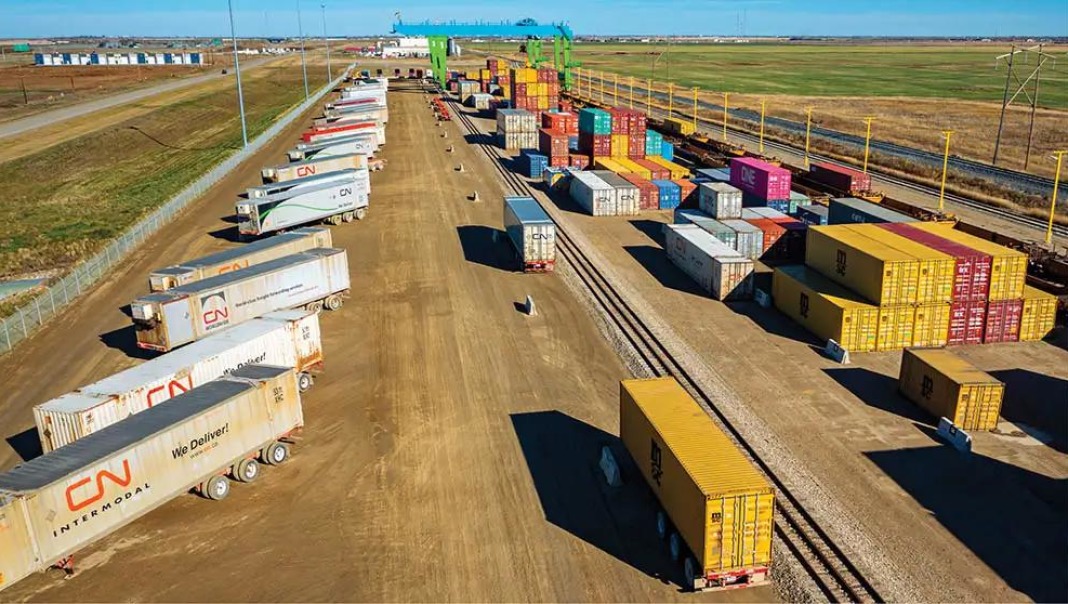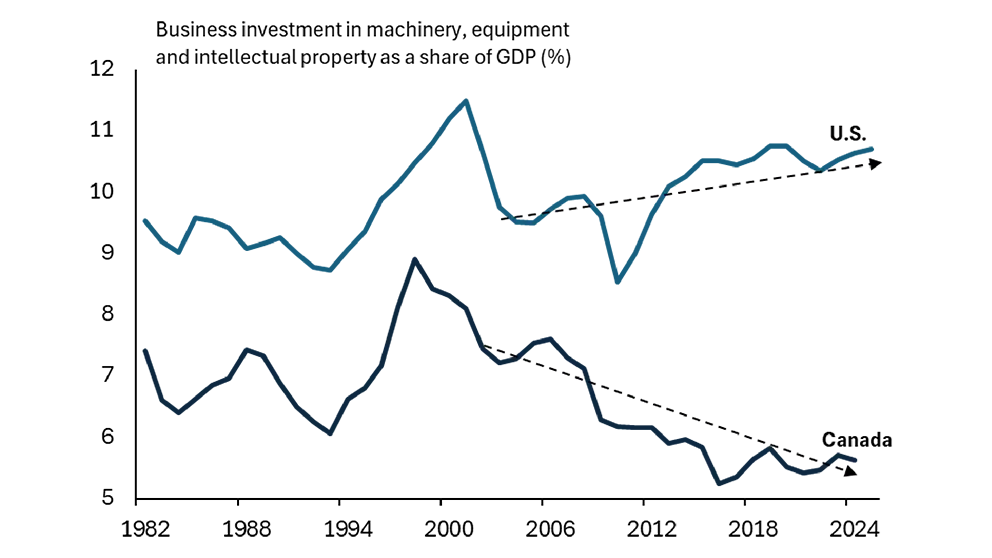Q1 2025 economic snapshot: Long-term opportunities for the Canadian economy despite short-term drag from trade disruptions
Friday, March 14, 2025
Reference: FCC

The threat of U.S. trade barriers continues to hang over the Canadian economy. Broad based tariffs, which the White House had vowed to impose on Canada in February, were postponed to March, and then again to April. For now, we are keeping unchanged our forecast of 1.6% for Canada’s 2025 GDP growth, although that estimate will likely be downgraded over the course of the year if there’s no further postponement of American tariffs.
While Canada cannot control what its trade partners do, it can influence its own destiny. Policy geared towards boosting productivity would arguably help cushion the blow of tariffs, particularly with respect to removing or relaxing barriers to interprovincial trade. We dive into this recently-revived, decades-old idea in this quarter’s economic snapshot.
Economy was vulnerable, even before trade shock
Forecasters were not particularly bullish about Canada’s 2025 economic prospects, even before the tariff drama unfolded. The economy has indeed been treading water for the last two years with real GDP growth averaging a meagre 1.5% over that period, well below the estimated potential. Worse, real GDP per capita, a proxy for standard of living, fell in both those years, highlighting Canada’s continued challenges in raising productivity.
Weakness in productivity growth, and therefore real GDP per capita, has actually been a recurring theme for the past two decades. And it’s not difficult to see why. Since 2002, business investment in machinery, equipment and intellectual property has consistently fallen as a share of GDP to reach just 5.6% last year. That contrasts sharply with the U.S. where the investment share of the economy has climbed steadily to reach nearly 11% last year (Figure 1).
Figure 1: Canada’s business investment heading in the wrong direction

Sources: Statistics Canada, U.S. Bureau of Economic Analysis, FCC Economics
This downtrend in the share of Canadian investment is in dire need of reversal if productivity is to be revived. A concrete action that could help here would be simplifying the regulatory environment in Canada. The Organization for Economic Co-operation and Development (OECD) ranks Canada 25 out of 38th in their overall indicator of product market regulations (which is a rough evaluation how policies promote competition and innovation). The Canadian Science Policy Center identified the regulatory burden in Canada as the most important obstacle to innovation. Public and business investment are intrinsically linked. Targeted public spending can improve productivity, yet issuing government bonds to finance such spending can raise long-term interest rates, restraining private investment (an undesirable effect referred to as “crowding out”).
Unlocking trade amongst provinces offers buffer against tariff threat
Another way to revive productivity is to eliminate internal trade barriers. Over the last several weeks, the idea of reducing interprovincial trade barriers to spur economic growth and counteract the negative economic impacts U.S. tariffs has been raised. This is not a new concept, having been prescribed by the Rowell-Sirois Commission way back in 1940.
What exactly do we mean by interprovincial trade barriers? There are essentially rules and regulations that slow the movement of goods and labour between provinces, such as trucking regulations, licensing requirements, or health and safety rules. Some examples within the food and beverage space include the sale and distribution of alcohol (which provincial governments have various degrees of control over, and all have different rules) and meat (where you are required to be a federally inspected abattoir to sell interprovincially, which can be costly).
Reducing these barriers would be immensely beneficial. An International Monetary Fund (IMF) study from 2019 found that non-geographic internal barriers to trade amount to a 21% tariff we effectively put on ourselves – and that number is about 27% for food products. In 2022, University of Calgary Economist Trevor Tombe estimated that eliminating these barriers could boost Canada’s GDP by between 4.4% and 7.9%. The Bank of Canada estimates a protracted trade war with U.S. would lead to a 2.5% hit to GDP. Based on these estimates, the elimination of interprovincial trade barriers would more than offset the hit to GDP from U.S. tariffs.
In a recent survey, Statistics Canada found that over 45% of agriculture business experienced at least one obstacle when selling goods or services to customers in another province. Outside of transportation related issues, provincial tax laws, difficulty in attaining permits/licenses, and the volume of paperwork to fill out are common grips for those in the industry (Table 1).
There are, of course, geographical barriers that make interprovincial trade naturally difficult. Indeed, the top obstacles below reflect this reality. Still, the barriers are real and, if addressed, would provide significant upside in terms of increased economic growth.
Table 1: Most common obstacles to interprovincial trade for the agricultural sector
Read more
Sign up to stay connected
- News
- Property Alerts
- Save your favourite properties
- And more!
Joining Farm Marketer is free, easy and you can opt out at any time.
